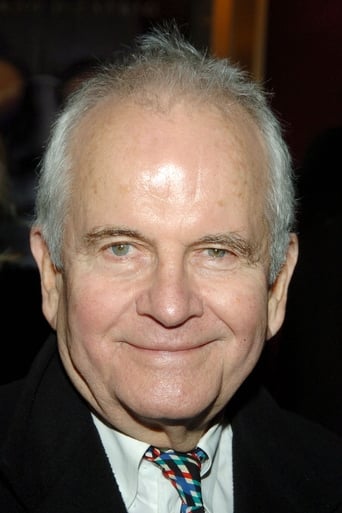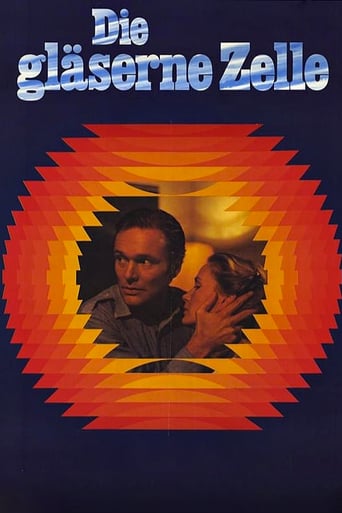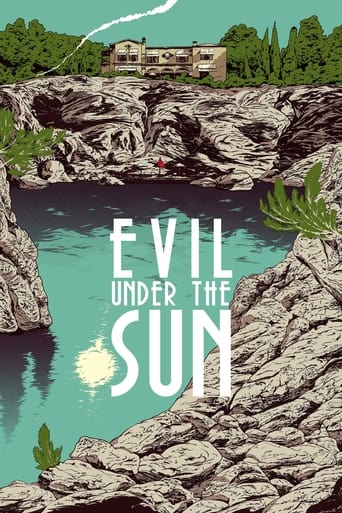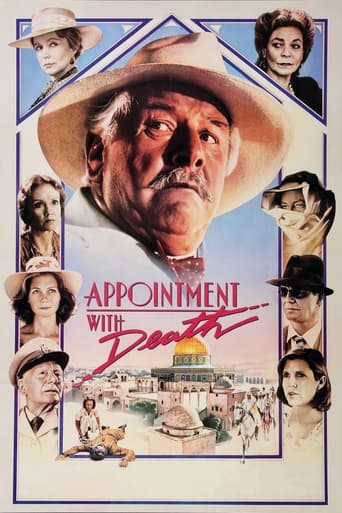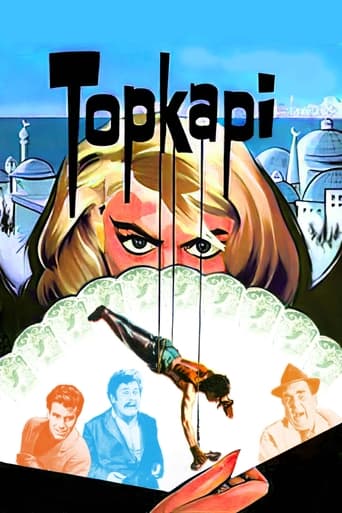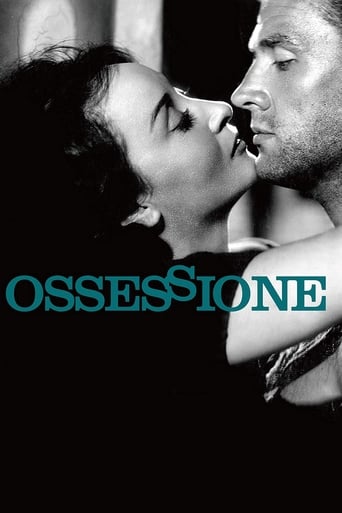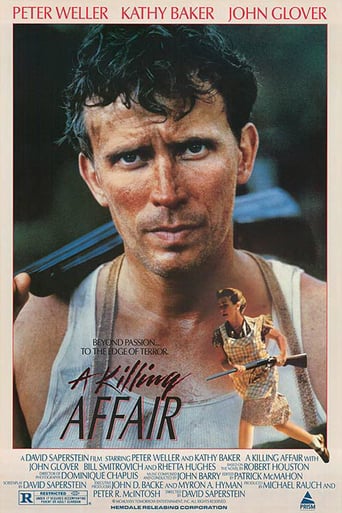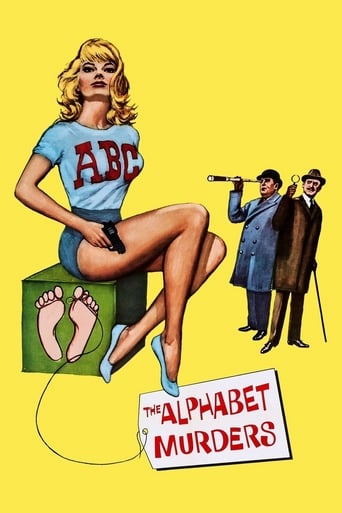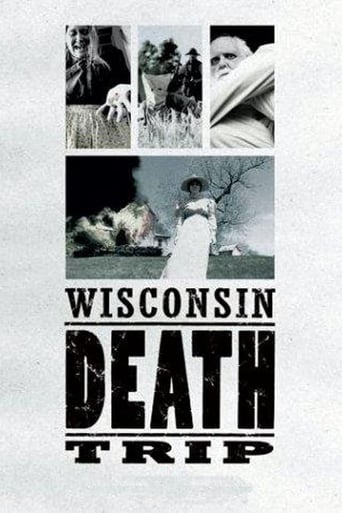

Wisconsin Death Trip (1999)
Inspired by the book of the same name, film-maker James Marsh relays a tale of tragedy, murder and mayhem that erupted behind the respectable facade Black River Falls, Wisconsin in the 19th century.
Watch Trailer
Cast


Similar titles
Reviews
Thanks for the memories!
Sorry, this movie sucks
Simply Perfect
what a terribly boring film. I'm sorry but this is absolutely not deserving of best picture and will be forgotten quickly. Entertaining and engaging cinema? No. Nothing performances with flat faces and mistaking silence for subtlety.
Based on the controversial book by Michael Lesy, WISCONSIN DEATH TRIP was originally shown on British TV as part of BBC's excellent ARENA series. ARENA often showcased excellent documentaries... including one about Bukowski, amongst others. It's since been replaced by STORYVILLE, which does the same great job. It buys in worldwide documentaries and gives them a healthy TV audience... WRESTLING WITH SHADOWS, THE STORY OF ANVIL and many more. Britain can be very proud of its dedication to interesting documentaries. For those who don't know the book, WISCONSIN DEATH TRIP is a collection of real-life photographs and newspaper reports from late 19th Century Wisconsin... particularly a town called "Black River Falls". The documentary begins and ends with the chief news writer (an Englishman called Frank Cooper) gushing: "We can say - honestly - that we know of few states or cities which offer the advantages as those offered by Wisconsin and Black River Falls. Our city was founded in 1854, and soon attracted industrious settlers from Norway, Germany, and other countries of the European continent.... Our site is not only picturesque but it also boasts a fertile countryside that grows everything known to this climate, in abundance.... When considering all of these advantages, it is safe to assume that nowhere in the length and breadth of this continent of ours can be found a more desirable residence than Black River Falls." This sets up the sucker punch of the movie. Because - as is still the case with modern news - despair is the most newsworthy emotion. The news reports - and the documentary - fixate on death, suicide and psychosis. There are a few funny notes - including a nice little piece on runaway lovers getting married - but it's largely a downbeat ride. WISCONSIN DEATH TRIP annoyed a lot of folks when it originally came out in the 1970s, due to its negative vibe. They felt it corrupted the past of Wisconsin, which already is often portrayed as desolate and loopy because of their harsh winters... and because both Ed Gein and Jeffrey Dahmer came from there. The movie lays on the comparison between the past/present Wisconsin stronger than the book. With little pieces of voiceovers of people in asylums to a few cutaways to modern Wisconsin life. The director consciously tries to show the relevance of these old stories to modern life. That touch adds extra weight to the original book and works beautifully. I loved the fact that the stories from the past are so similar to the stories now. For all the bleating about the past being better than today, the same problems exist. Poverty driving people insane. Teenage kids out of control. People committing suicide over unrequited love. A continuing thread through WISCONSIN DEATH TRIP is Mary Sweeny who - after a bash of the head - goes around smashing windows because it makes her feel better. To calm her nerves beforehand, she does cocaine (which was legal back then). So many people forget the truth of their childhood, and the further history goes back the more romanticised it becomes. WISCONSIN DEATH TRIP does a spectacular job of exposing that myth. For all the modern complaints on drunkenness and binge drinking, 18th Century London (and Gin Lane) was much worse. If you think drugs are bad now, in 19th Century Britain, babies were given opium sticks (called "laudanum") to suck on and keep quiet. In the early Victorian era, kids of 6 or 7 were regularly at work in factories. In iron mines, the average lifespan of workers was 27. For all those who complain about the present, the truth is a different story. Aside from the historical insight of WISCONSIN DEATH TRIP, it's been put together very well. The incredibly powerful photos from the book (by Charles Van Schaik) are included, and the narration of the news reports has been pared down to the most eye-catching stories. British director James Marsh (from MAN ON WIRE) is at the helm, and there's a beautiful attention to detail to WISCONSIN DEATH TRIP. From the beaten-up costumes, to simpler aspects such as the rootsy music and the beautiful, creepy lighting. Apparently this was a three-year labour of love for Marsh, and it shows. It creates as dynamic a movie as you can get from photos, voiceovers and crime-scene reconstructions. WISCONSIN DEATH TRIP really hit a good note with me, and it should with you too. It's the information - and the great photos - that drive it, but it's done with such skill that it's also entertaining and addictive viewing.
'Nowhere in this great continent of ours can be found a more desirable residence.' This is a pitch for the small town of Black River Falls, Wisconsin. If by any chance you've already accepted this seemingly ordinarily little exaggeration as the truth, then its time you saw a melancholic little documentary called Wisconsin Death Trip.This is a film which details the events that occurred in Black River Falls during the 1890s and is the director James Marsh's take on the 1970s literary cult classic of the same name, written by Michael Lesy. It seems that the whole town was besieged by fits of suicide, murder, lunacy and several inexplicable and bizarre events that could have been plucked cleanly from an Edward Gory poem. The grim and dark character of this strange little town and its inhabitants are communicated through photographs taken at the time and newspaper reports. The photos are connected to starkly beautiful black and white recreations of the odd goings-on of Black River Falls. Ian Holm narrates the film in a haunting and sometimes blackly comic manner, and a few records from the local insane asylum are whispered disturbingly, telling us about the many inhabitants who were committed there. The recreations are shot with dazzling fluidity, all are stunning to watch and every single one shocks or horrifies to an enthralling degree.Like Aronofsky's Requiem for a Dream, this twisted tale takes place over several seasons and the other-worldly events just keep on happening; from a farmer who blew his own head off with dynamite to a 63 year old-14 year old paedophilliac marriage, they seem never-ending as the depressing Wisconsin Winter looms over the horizon. There are certain characters who keep reappearing throughout the film such as the 13 year old who shot an old man for fun and then participated in a western style chase and gun fight with a posse, and the has-been opera singer, Pauline L'Allemand, who moved to Black River Falls and slowly went mad, hearing voices from the spirit world and ended up in the Mendota Asylum for the Insane.It is the morbid fascination that resides in some of us which makes us want to watch this to the end, to see just how tantalizingly strange the events in this town can get. The macabre style is pulled off with perfection; it is often grisly and melancholic to watch and yet I was fascinated by it and soaked up every moment. Wisconsin Death Trip fails, however in trying to convince us that Black River Falls hasn't changed since the 1890s. Its attempts (in colour, rather than black and white like the rest of the film), are rather forced and unsatisfying. But the blank, placid faces of the old people of the modern day town are certainly reminiscent of the photos taken back at the end of the 19th century. Perhaps the sheer number of the events at the time makes the film a little unbelievable, but it is the photos which remind us that these events actually took place and aid in bringing home the Gothic and demented atmosphere of the whole tragic tale.The truth is: I was horrified and engrossed in the story of this freakish town and the maniacs who resided there. Then, after thinking about it, I realized that the crimes of passion, suicides and gun violence of our so-called 'modern society' were happening over a century ago. I believe that this is one of the most significant points James Marsh was trying to put across.However, there are still some out and out undeniably weird happenings that took place in Black River Falls which would leave us utterly aghast if we saw them in the present day. When viewing, be sure to look out for the Polish girl who set fire to numerous buildings because she was 'lonely and homesick and needed some excitement.' and especially Mary Sweeney, with her window smashing antics.
Unapologetically dark. Unashamedly morbid and moody. This documentary offers an alternative, more realistic, depiction of American life at the turn of the twentieth century. Mundane elements of work, love, marriage, and simple existence in the American North are swept up in an undercurrent of darkness that reminds the viewer that history is not all presidents, education, and industry. This documentary offers both sides of life, not just the common, brightly lit portion that is outlined in popular media and historical documents. This is all not to say, however, that the film is oppressive or grotesque: accounts of insanity, murder, and tragedy are intermixed with elements of black humor and sarcasm. Well worth the hour-and-a-half running time.
It is easy to be dazzled by 'Wisconsin Death Trip''s shimmering beauty. It is unlikely that you will see a more beautiful film all year - the sharp monochrome which creates an eerie dream out of history; the breathtaking fluidity of the camera, including some stunning, Angelopolous-like sequence shots; the extraordinary compositions that at once mummifies the subjects, traps them in their time like the still photographs the film is based on, and allows them to burst shockingly free from it. For its brief running time, there is not one ugly or inept sequence, and many in which you will gasp 'wow'. This was made for TELEVISION?! Needless to say, there is nothing like it in the cinema right now.But is all this gorgeousness appropriate to the subject matter, the life and times of a small Wisconsin town, Black River Falls, in the 1890s, only 40 years old, deeply religious, composed of different races, with no troubles from the Indians, that in one decade seemed to burst into a frenzy of febrile anarchy, spewing out random murders, diseases, economic depressions, suicides, infanticides, paedophiliac marriages, persistant window-breakers, faded opera singers and, especially lunatics.The film comprises a series of articles written by the town's English newspaper editor, divided into the four seasons. The stories are an unrelenting catalogue of collective insanity and horror, a complete breakdown of social order - the only time a sheriff is mentioned he is leading a posse hunting a young boy. Interspersed with the sensationalism are reports of the odd attempts at civic propriety, temprance meetings, church warnings against promiscuity etc., but these attempts at social control are tainted by the surrounding madness, and sound as beserk in their optimism as Canute or Quixote.This is quiet American town life as Surrealist nightmare, a real-life David Lynch, a topsy-turvy inversion of what we expect from such communities. It's not like this is some kind of metaphor for what was going underneath repressive propriety - THIS REALLY HAPPENED. Why? There are a number of tacit answers - the economic failure of the American dream resulting in psychological despair (the first case of insanity is an unemployed suicide); the failure of the American melting-pot ideal, the different nationalities divided, unable to assimilate into Americans, their social rupture displaced into psychic rupture; the end of the frontier myth, the idea that there are no more Western open spaces to conquer, a feeling of being hemmed in, confined, hence, perhaps all the lunatic asylum inmates; the supernatural, God, nature - many townsfolk hear voices, fear witchcraft, and there are many shots of nature, piercing sunlight disrupting the calm, speeding, shadowy clouds, that seem pathologised.The problem with the film is its ahistoricism. The events, like the town itself, exist in a vacuum, an aberration. Every story seems connected with some kind of tragedy or fear, but surely the editor's paper was not filled with this stuff all the time on every page; people would surely notice something was seriously wrong. The inexorable horrors become so profuse, so excessive, that they become comic, not because it is too much to bear, but because it seems so implausible. The filmmakers seem to think so too, and the stylised recreations take on a comic element. The film is least successful when it attempts to connect the events of the 1890s with our own fin de siecle - modern day Black River Falls, with its mad old ladies singing Star Spangled Banner, can only seem insane contiguous with its ancestors' dementia, and, in case we miss the point, the slow tracks give an ominous, oneiric feel. As with today, 1890s children with guns go on killing sprees; there are problems with drugs, authority, aimless youth, dysfunctional families etc. The madness never ends.The stories, filtered through the consistent sensibility of the editor, are told in terse, literal, seemingly objective language. But the editor is both male and English-Protestant - he can't help informing his plain words with ideology. His reaction to aberrant women, for example, is typical of the times. They are not conscious rebels against a repressive society, they are invariably hysterical and mad. What is remarkable, though, is how the madness transcends gender, class, age, ethnic boundaries, producing a monstrous parody of the melting-pot ideal, a nation connected by insanity. In this catalogue of death and disease, the one life-force is ironically a window-breaker, a highly educated former teacher who is possessed by the urge to smash every window she comes across. This may be destructive, but she is both an image of freedom and a pattern asserted on the randomness; life in a landscape of corpses.The film raises interesting questions about the documentary form, questions about the truth (the newspaper is a 'journal of record'), about history. The film's structure is based literally on documents, which are read out; there are interviews with real people - surely it's a documentary? But the content is largely a series of recreated scenes - these scenes are not recorded as they happen, which might be a definition of a documentary. Yet 'the Thin Blue Line', winner of the best documentary Oscar, was full of recreations. But, if we call this a documentary, than so is, say, 'The Diary of Anne Frank', starring Shelley Winters. These questions are important - documentary sets itself up on a higher ethical register with some glorified access to truth - we must not let this assumption go unquestioned.


